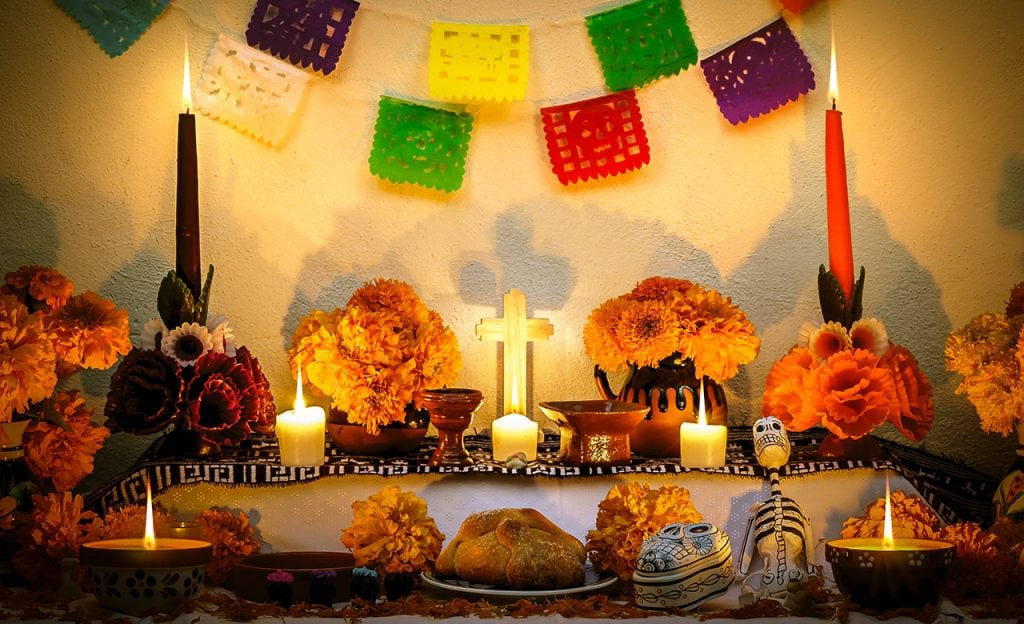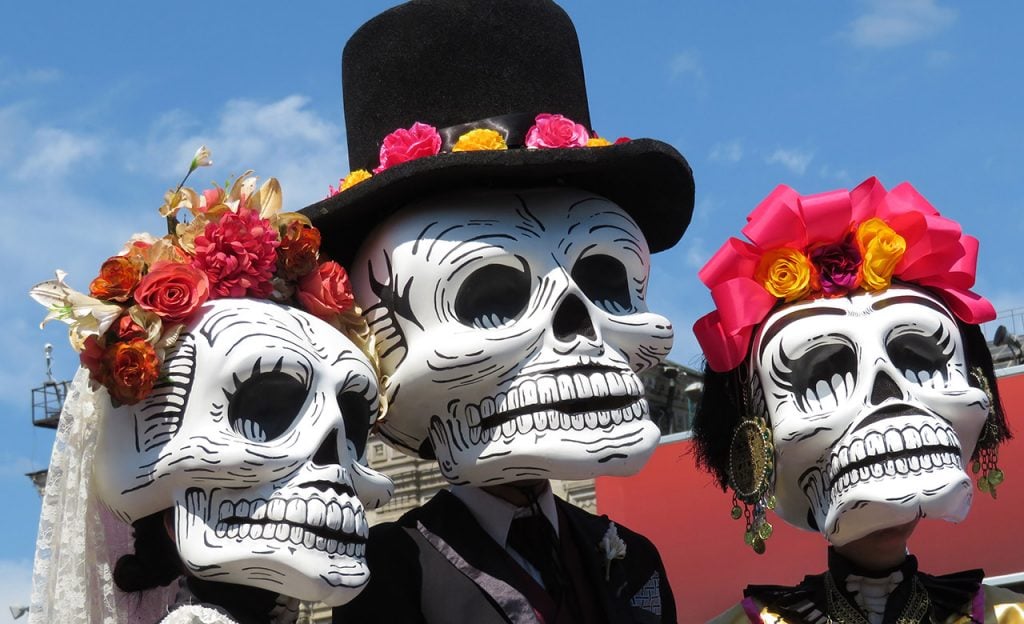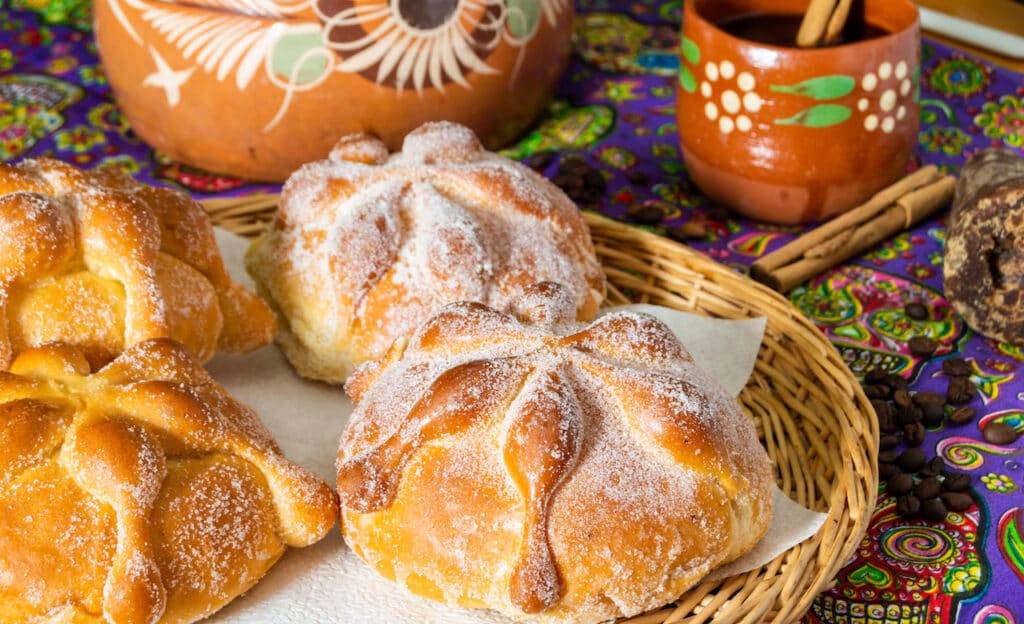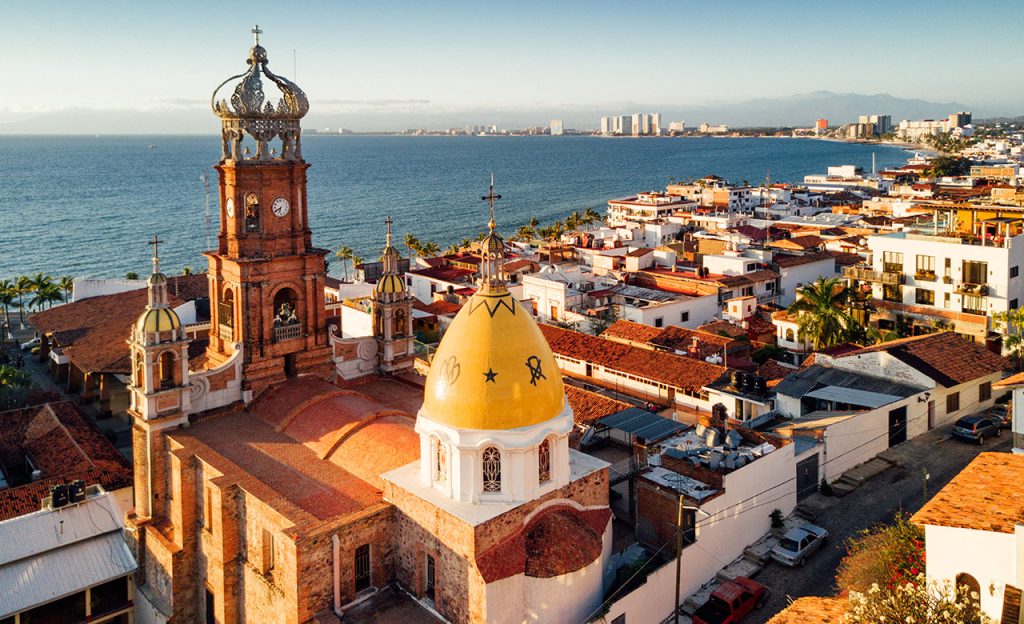The origins and traditions of the holiday, plus the best Day of the Dead celebrations from the U.S. to Mexico!
Have you heard of Day of the Dead? If so, you may be asking yourself a few questions about this famous holiday, like when is Day of the Dead celebrated? What countries celebrate Day of the Dead? And how?
In Spanish, it’s called Día de los Muertos, and it’s a big holiday in Mexico, where people gather to honor their deceased relatives with Day of the Dead food, festivities, and plenty of marigolds–the traditional Day of the Dead flowers!
Movies like Coco and the Book of Life show the beauty of Day of the Dead for kids, but do you know the deeper meaning behind the skeleton costumes and decorations? Here’s a breakdown of traditions, origins, and the best locations to experience this spectacle that’s actually a celebration of life!

Honoring the ancestors
Celebrated throughout Mexico from October 31 to November 1, Día de los Muertos is a blend of culture and rituals from the Americas and Europe. Its roots go back to the Aztec civilization, so you could say that it “started” 3,000 years ago in ancient Mexico!
The Aztecs believed that the dead would have to make a difficult journey through the afterlife to reach their final resting place, so some of their rituals involved leaving out food to help them along the way. This ancient belief is now a part of Día De Los Muertos celebrations today.
The holiday is also influenced by European-Spanish customs. In Spain, All Souls Day was celebrated by putting candles and flowers on family members’ graves, and that same tradition made its way to Mexico.
During Día de los Muertos, it’s believed that the spirits of dead relatives are able to travel back to earth and reunite with their families for 24 hours. So, Mexicans decorate streets, homes, and graveyards to “guide” these souls back to earth. Today, the tradition of honoring deceased ancestors and friends remains at the heart of the holiday.

How it’s celebrated
The ornately painted faces and sugar skulls, or “calaveras”, help remind people of their loved ones and that death is a natural part of life. But there’s more to the celebrations!
For one, offerings to the dead are placed on altars called “ofrendas,” where you’ll see candles, colorful flags, and pictures of the dead. There’s even a special, sweet “bread of the dead” (pan de muerto), which is often decorated with icing to resemble bones.
The favorite foods and drinks of those that have passed are also included. Meanwhile, the living feast on tamales, candied pumpkins, and hot chocolate!

Another tradition is writing poems about the dead… but not sad or sappy ones! It’s tradition to memorialize the good things, but also lightly mock the person with comedy and absurdity to help keep things light.
Contrary to popular depictions, parades haven’t traditionally been part of this holiday as it’s so family-focused. The ofrendas and shared meals, poems, and stories often take place at home, though parades and street celebrations have popped up in recent years.

Where to experience it
This traditional Mexican holiday is celebrated across the country, from the serene beaches of Costa Maya on the southeastern tip to the ornate churches of Mazatlán in the west.
If you’d like to experience it yourself, set sail for Puerto Vallarta from Long Beach, California to see the decorative shrines that line the boardwalk and town square, and mariachi bands and face painting contests that let everyone in on the fun.
Outside of Mexico, American cities with large Mexican populations are where you’ll catch some Día de los Muertos celebrations. In Los Angeles, the Hollywood Forever cemetery is a fitting host for one of the largest celebrations outside of Mexico. And in San Antonio, Texas, the famous river walk transforms into a Día de los Muertos ground with decorated barges along the water.
